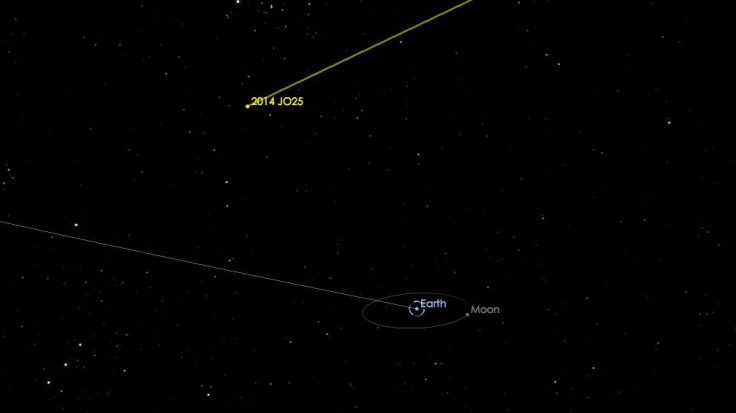Asteroid Coming For Earth: Large Rock Will Approach This Month

A large asteroid is coming this way — but don’t worry, we’re not going to die.
NASA’s Jet Propulsion Laboratory announced this week that the 2014 JO25 asteroid, first spotted a few years ago, will fly by Earth on April 19, coming from the direction of the Sun. Amateur astronomers can get a glimpse with a small telescope for a night or two as it flies away from us.
Read: These Asteroids Are the Remains of a Destroyed Planet
“Although there is no possibility for the asteroid to collide with our planet, this will be a very close approach for an asteroid of this size,” NASA said, noting the distance of 1.1 million miles. That’s more than four times farther from Earth than the Moon is. “Small asteroids pass within this distance of Earth several times each week” but this one is about 2,000 feet across.
The last asteroid the size of 2014 JO25 or bigger to come so close to Earth was the 3.1-mile-long Toutatis in 2004, according to NASA, and such an event won’t happen again for another 10 years — when a half-mile asteroid will greet us at the same distance as the Moon.
Scientists know that the upcoming large asteroid’s surface is quite reflective but they don’t know much else, so its flyby will be a chance to learn more. If they miss it on April 19, they won’t have another chance as good as this one for centuries, because NASA has reported that 2014 JO25 won’t come as close for another 500 years.
There are asteroids and other objects flying through Earth’s night sky all the time. In fact, four other asteroids will have close approaches on the same night as this one. But those four others will be considerably smaller and slower than 2014 JO25, which will be moving at a velocity of about 20 miles per second.
See also:
Black Hole vs. Supernova: How These Things Murder You in Space
© Copyright IBTimes 2025. All rights reserved.




















